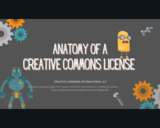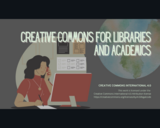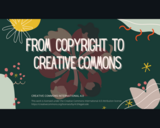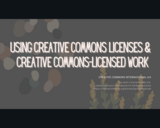
A brief overview of the six Creative Commons licenses and how each works.
- Subject:
- Applied Science
- Information Science
- Material Type:
- Module
- Reading
- Author:
- Tess Beebe Olten
- Date Added:
- 08/16/2021

A brief overview of the six Creative Commons licenses and how each works.

This module takes a look at the advantages of OER and the Creative Commons for both instructors and their learners. Both instructors and learners can enjoy using OER as well as creating it for use by others!

This Course Review and Approval Tool (CRAT) is the “workbook” that faculty use to design and plan their course with best practice in mind that addresses: curricular alignment with objectives, learning activities, practice assignments and quizzes, and higher-stakes assessments. The 10-tabbed spreadsheet is a digital multitool that centralizes and aggregates the entire course development, review, and approval processes. This tool is used to plan the course prior to its build in the Learning Management System (LMS) as part of an eight-module LMS-based support course that steps faculty through the process and gives them a learner-based perspective on how the tools work together and the features available to them for use in their own courses.
In addition to facilitating communication with multiple stakeholders who may share the document, the process MODELS a self- and peer-reviewed authentic assessment strategy that adapts itself well to any curriculum, whether for training, orientation, or credit-bearing coursework. It supports and models features of an intersection of agile design, backward design, and reflective practice in addition to encouraging authentic and formative assessment strategies. Providing all necessary documents in one easily accessed and bookmarkable document facilitates the process of course development by providing both a model and a touchstone for faculty who are often overwhelmed with the complexity of the process of developing or redeveloping courses regardless of delivery modality. While most of our faculty came to the program because of requirements for online or hybrid learning, most have exclaimed happily that they now apply this process to all of their courses and their learners have shown appreciation for the clarity and consistency that the tool promotes and supports.
The document also includes a dynamic link to future updates for anyone who adopts it and wants to follow its evolution. Feel free to adapt!

A brief overview of the history of copyright laws and why the Creative Commons was right on time!

A look at how Creative Commons are applied to allow for remix, adaptation, and derivatives, and how to stay between the lines with each type of permission or restriction.